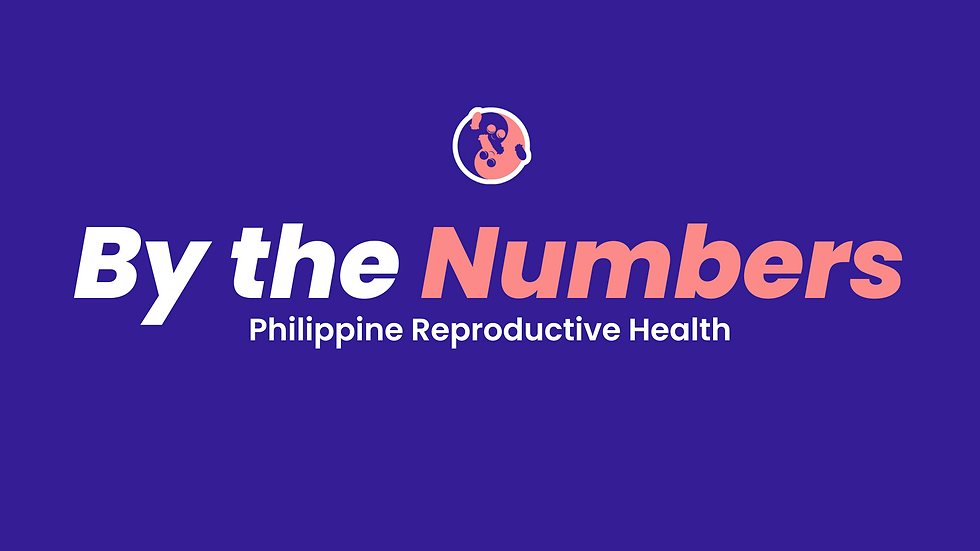By the Numbers: Philippine Reproductive Health
- Project PARE
- Feb 8, 2024
- 2 min read

How can health be wealth without reproductive health?
In a country where the statistics of teenage pregnancy and the prevalence of sexually transmitted diseases (STDs) continue to surge, a stark reality emerges—the pressing necessity for an effective and comprehensive approach to reproductive health education.
According to the Philippine Statistics Authority (PSA), one in ten live births in the Philippines results from adolescent mothers. This provides compelling evidence of the severity of the issue at hand, given that pregnant teens face a higher risk of medical conditions such as preeclampsia, which is hypertension or high blood pressure during pregnancy, systemic infections, or organ damage.
Consequently, as per the World Health Organization (WHO), the Philippines grapples with a substantial HIV burden, with 77,000 individuals reported to be living with the virus as of 2018. WHO's statistics on sexually transmitted diseases (STDs) in the Philippines reveal that over one million people between the ages of 15 and 49 in the country have been afflicted by STDs.
These findings underscore not only the struggles faced by youth but also reveal significant deficiencies in reproductive health education, shedding light on the notable gaps in health education, emphasizing the pressing requirement for a more thorough approach to tackle the intricate aspects of sexual health.
As society stigmatizes discussions around sex education, it contributes significantly to the ongoing prevalence of related issues such as teenage pregnancies and sexually transmitted diseases (STDs). Treating this topic as taboo fosters a culture of closed-mindedness, leading to a dearth of accurate information concerning reproductive health education.
Rather than deeming the subject taboo, it is crucial to approach it as an open and constructive dialogue on sexuality and contraceptives. Bridging the divide in reproductive health necessitates government initiatives and cooperation from each individual.
However, education can only be an anchor for individuals and a band-aid to these issues temporarily. A total combat, merging education, laws, protocols, and programs, has to be implemented to gradually reduce the problems related to reproductive and sexual health.
Strengthening the Responsible Parenthood and Reproductive Health (RPRH) Law and RA 9262, or the Anti-Violence Against Women and Their Children Act of 2004, and pushing through bills and programs such as free access to menstrual products for students and two-day menstrual leave for women on the workforce, is a stepping stone to move forward with this agenda.
No doubt, the country, and its society have a lot to work on in their approach to reducing the number of reproductive and sexual health issues that are connected to the economic status. By breaking down barriers, cultural norms, and ‘taboos,’ imposing an active reproductive and sexual health education in schools, and giving attention to struggles faced by the disadvantaged, a responsible and healthy community can be achieved, for the benefit of the present and future generations.
_edited.png)

Comments